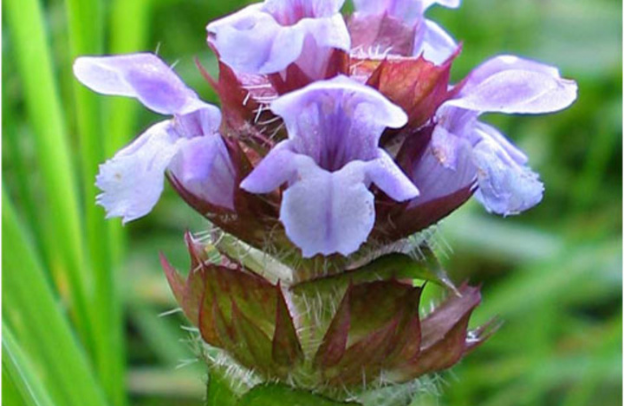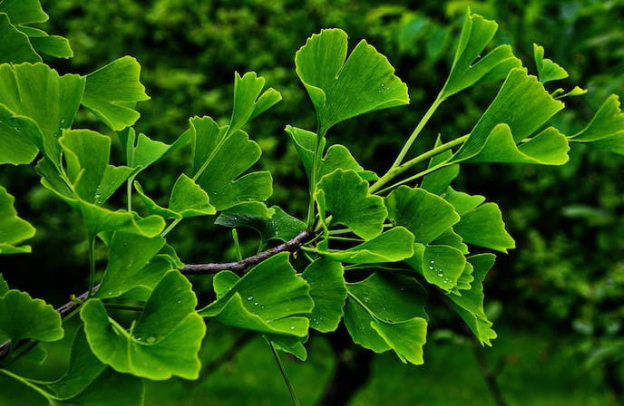Take a moment and picture your lawn, a local park, or the grassy edge of a familiar trail. Now, look closer. Down among the blades of grass, you’ve almost certainly seen it: a small, hardy plant with a dense, purple-topped flower head.
You’ve probably walked over it a thousand times, dismissing it as just another common weed. But what if I told you that this humble plant, known as Self Heal, carries a promise of profound healing right in its name?
For centuries, this unassuming herb, Prunella vulgaris, has been a cornerstone of traditional medicine cabinets from Europe to Asia, revered as an “all-heal” for its astonishing versatility. But its story offers more than just a forgotten folk remedy. The very concept of a single plant that can mend a wound on your skin while simultaneously strengthening your body’s deep defenses resonates with a powerful and ancient wisdom, one that is central to African healing philosophies.
In these traditions, a plant is never just a collection of chemicals; it is an intelligent ally, and one that can restore balance to the whole person, inside and out. So, let’s journey together and rediscover the healer beneath your feet, and in doing so, explore a more connected, holistic way of viewing wellness.
The Wound Healer on Your Lawn: A First-Aid Kit in a Flower
Before it was relegated to the status of a weed, Self Heal was the go-to first-aid of the common person. If you had a cut, scrape, or burn, you wouldn’t run for a plastic tube of ointment; you’d look for this little purple flower.
Herbalists have long prized it for its ability to quickly and cleanly heal the skin. It was crushed into a poultice and applied directly to wounds to stop bleeding, prevent infection, and soothe the angry inflammation of a fresh injury. Even a sore throat could be remedied by gargling with a strong tea made from its leaves and flowers.
Modern science is now catching up to this ancient wisdom, revealing the chemical prowess packed into this small plant. Self Heal is rich in tannins, which act as astringents.
Think of them as nature’s way of gently tightening and toning tissue, which helps to reduce bleeding and forms a protective barrier over a wound, shielding it from bacteria. Furthermore, its power comes from a potent cocktail of active compounds, most notably rosmarinic acid.3 As documented in numerous studies, including a review in the Journal of Pharmacognosy and Phytochemistry, rosmarinic acid is a formidable anti-inflammatory and antioxidant, calming the redness and swelling that slow down healing.
But perhaps its most remarkable talent is its antiviral capability. If you’ve ever been plagued by the cold sores caused by the herpes simplex virus, Self Heal might be a powerful ally.
Research published in the journal Antiviral Research has shown that extracts of Prunella vulgaris can effectively block the virus from entering cells, making it a powerful topical treatment to speed healing and reduce outbreaks.4 It’s a stunning example of how traditional use, observed over centuries, is now being validated in the laboratory.
An Ally for the Interior: Fortifying the Body’s Defenses
Self Heal’s genius, however, is that it doesn’t just work on the surface. The same plant you’d use to heal a cut was also brewed into a tonic tea to fortify the body from within. This is where the name “all-heal” truly earns its meaning.
Traditional healers understood that a wound doesn’t heal in isolation; it heals because of a strong, functioning body. True healing isn’t just about patching a problem; it’s about strengthening the entire system.
Internally, Self Heal acts as a powerful immune modulator.5 This means it doesn’t just crudely “boost” your immune system, but helps it respond more intelligently and effectively.
When you feel the first tickle of a sore throat or the fatigue of an oncoming cold, a tea of Self Heal can help rally your body’s natural defenses. It’s also known as a lymphatic herb.6 Your lymphatic system is like your body’s drainage and filtration network, crucial for clearing out metabolic waste and fighting pathogens.
Self Heal gently stimulates this system, helping to move stagnant fluid and support your body’s detoxification processes. This is why it was often called a “blood cleanser”—it helps the body clean house, allowing your immune system to function at its peak. This dual action, healing both the visible wound and the invisible inner terrain, is the hallmark of a truly profound healing plant.
An Echo in African Ethnobotany: The Spirit of an ‘All-Heal’
While Prunella vulgaris itself is not a prominent feature in the vast African pharmacopeia, the principle it embodies is central to traditional African healing. In this worldview, the body is not a machine with separate parts. The skin that covers you is not separate from the immune system that protects you from within; the physical is not separate from the spiritual.
A plant that demonstrates the ability to heal on multiple levels is therefore considered to have great power and spirit.
You can see this exact philosophy reflected in revered African medicinal plants. Take the Burn Jelly Plant (Bulbine frutescens) from Southern Africa. Just like Self Heal, it is a first-aid superstar. If you get a burn, insect bite, or rash, you simply snap off one of its succulent leaves and apply the clear, soothing gel directly to the skin for immediate relief and rapid healing. But its power doesn’t stop there.
Traditional healers also prepare an infusion from its roots to be taken internally as a powerful tonic to fight infections and cleanse the blood. It heals the wound and fortifies the warrior within.
Similarly, consider Centella asiatica, known as Gotu Kola.7 This remarkable herb, which grows widely across Africa and Asia, is legendary for its ability to heal the skin.8 It stimulates collagen production and improves circulation, making it exceptional for repairing wounds, sores, and even reducing scar tissue.
At the same time, it is one of the most revered internal tonics for the mind and nervous system, used to enhance clarity, calm anxiety, and support overall vitality. In these plants, you see the same beautiful pattern as in Self Heal: a holistic power that restores integrity to the whole person. The healer does not ask, “What does this plant do?” but rather, “How does this plant restore balance?”
From Field to First-Aid Kit
Connecting with the healing power of Self Heal is remarkably simple. The first step is positive identification. Look for a low-growing plant with paired leaves and a distinctive, dense flower head that starts green and blooms with small, purple, hood-like flowers from the bottom up.
It is absolutely crucial to be 100% certain of your identification before using any wild plant. Cross-reference with a reliable botanical guide or consult an experienced forager.
Once you’re confident, you can make a simple field poultice for a cut or scrape by chewing a few clean leaves (your saliva activates the compounds) and applying the paste directly to the area. For a more refined remedy, you can create a healing salve by infusing the fresh or dried herb in a carrier oil like olive oil over low heat, then straining it and adding melted beeswax to solidify it. To access its internal benefits, a simple tea made by steeping a tablespoon of dried herb in hot water for 10-15 minutes is a wonderful way to support your immune system.
As with any herb, listen to your body. While Self Heal is considered very safe, you should always start with a small amount to ensure you don’t have an allergic reaction.
The Humble Healer
In our modern world, we are often taught to look for complex, targeted solutions for our health problems. But Self Heal invites you to look down, to find a profound and versatile medicine in the humble places we so often overlook.
It reminds us that healing is not always about a powerful intervention, but about gently supporting the body’s innate wisdom to repair and defend itself.
By understanding this small plant through the dual lenses of science and tradition, the Western and the African, you do more than just learn about a useful herb. You reclaim a piece of our shared human heritage, a heritage that knew how to find medicine in the meadows and understood that the greatest healers are often those that work quietly, humbly, and completely, restoring balance to the whole.
The next time you see that little purple flower, perhaps you’ll see it not as a weed, but as a quiet invitation to heal.







